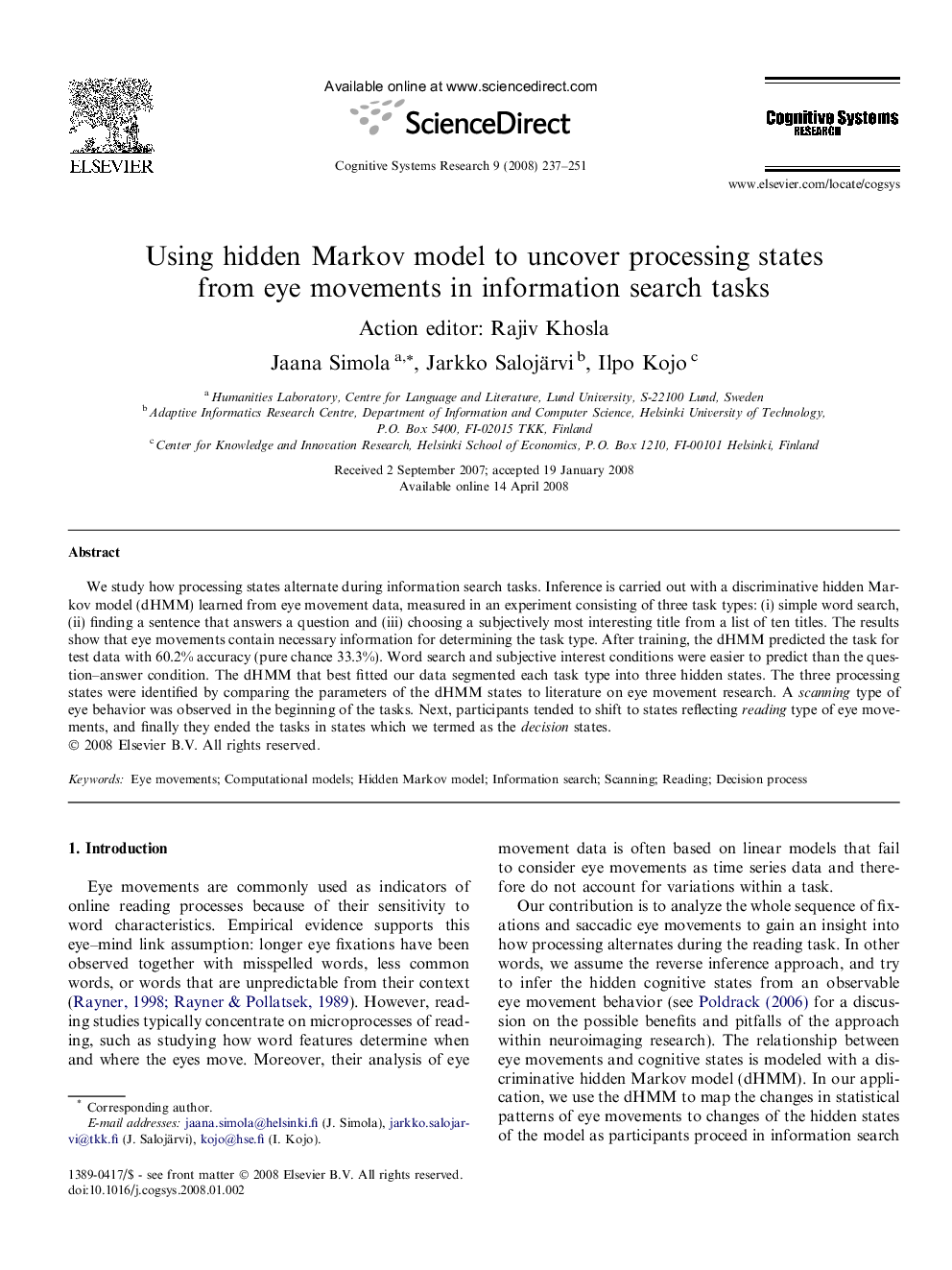| Article ID | Journal | Published Year | Pages | File Type |
|---|---|---|---|---|
| 378652 | Cognitive Systems Research | 2008 | 15 Pages |
We study how processing states alternate during information search tasks. Inference is carried out with a discriminative hidden Markov model (dHMM) learned from eye movement data, measured in an experiment consisting of three task types: (i) simple word search, (ii) finding a sentence that answers a question and (iii) choosing a subjectively most interesting title from a list of ten titles. The results show that eye movements contain necessary information for determining the task type. After training, the dHMM predicted the task for test data with 60.2% accuracy (pure chance 33.3%). Word search and subjective interest conditions were easier to predict than the question–answer condition. The dHMM that best fitted our data segmented each task type into three hidden states. The three processing states were identified by comparing the parameters of the dHMM states to literature on eye movement research. A scanning type of eye behavior was observed in the beginning of the tasks. Next, participants tended to shift to states reflecting reading type of eye movements, and finally they ended the tasks in states which we termed as the decision states.
